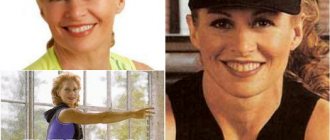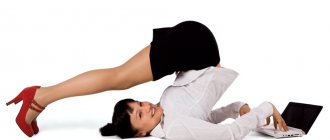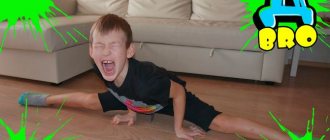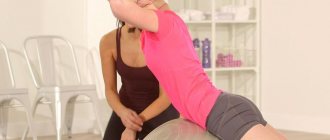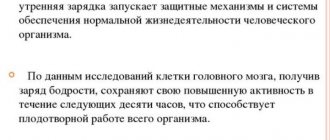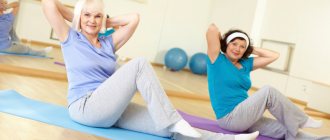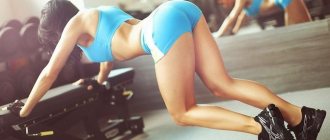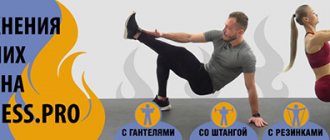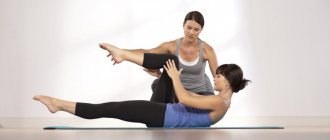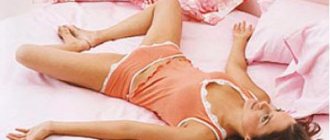Joint gymnastics is prescribed to develop, stretch, heal and strengthen the joints of the legs, arms, hips, and spine. Effective physical exercises should be selected by the trainer strictly individually, taking into account the needs of the person, age, and the presence of certain types of diseases. First, it is recommended to perform a set of exercises under the supervision of a specialist, then you can do exercises at home. Useful workouts help strengthen the body, prevent the progression of degenerative pathologies, and recover faster during rehabilitation after surgical treatment.
When is joint training needed, what is its benefit?
Joint exercises are necessary to maintain the health of not only the ligaments and joints, but also to strengthen the entire body, giving it flexibility, strength and endurance. Therapeutic exercise is necessarily prescribed to patients with joint diseases of a degenerative-dystrophic nature, as well as during the recovery period after surgery, endoprosthetics, severe injuries, dislocations and fractures. The benefits of such training are undeniable, because with their help you can:
- increase flexibility and tone of the body, remove waste and toxins from the body;
- strengthen muscles and joints, remove excess weight;
- normalize the functioning of the endocrine and nervous systems;
- prevent the progression of degenerative diseases that often affect the structures of the hip and knee joint.
Contraindications
To prevent exercise therapy from leading to an exacerbation of the disease, exercises should be performed only during the period of remission. It is forbidden to make sudden movements or apply great force. There are a number of contraindications for gymnastics. These include:
- exacerbation of chronic diseases;
- heat;
- presence of knee tumors;
- pathologies of the heart and blood vessels;
- cerebrovascular accident;
- period after operations;
- high pressure;
- injuries;
- severe pain;
- the presence of a hernia;
- menstruation.
Performing exercises is indicated when joint mobility is limited. Joint exercises for knee arthrosis are indicated for patients at different stages of pathology, as well as during the recovery period after surgical treatment. Exercises are recommended for the following disorders:
- limitation of limb mobility;
- formation of contractures;
- muscular and ligamentous tendon dystrophy.
However, physical therapy is not always beneficial for sore joints. They refuse to practice in the following conditions:
- exacerbation of chronic pathologies;
- blood pressure surges;
- increase in temperature indicators;
- formation of tumors of various etiologies;
- cardiovascular pathologies.
General rules of joint gymnastics
Gymnastics for joints will be beneficial and effective if the exercises are performed correctly. Therefore, before training, you should familiarize yourself with the following recommendations:
Exercises that develop flexibility should be performed smoothly.
- When performing exercises for the legs, arms, spine, and shoulder joints, it is important to monitor your well-being, preventing the development of pain and discomfort. If you want to do strength training, you need to agree with the trainer on the intensity of the load.
- For sick joints, exercise should be gentle, so the course of exercise therapy is selected individually, because general training, in which the load is much greater, can provoke complications.
- It is important that exercises to develop flexibility are performed smoothly, without sudden movements.
It is important to do gymnastic training regularly, without missing a single lesson, otherwise you will not be able to achieve the desired result.
Rules for performing gymnastics for knee joints
You will probably be interested in reading an article that will tell you what breathing exercises are for bronchitis, its features, advantages and disadvantages.
To achieve a really good result and get a therapeutic effect without harming yourself even more, a person must adhere to the following rules:
- Training should be regular, and the entire course of treatment should last at least 2 weeks. If the problem with the knee joints is advanced, then you should do therapeutic exercises for 30 days.
- All exercises are performed 2 or 3 times a day. The duration of such classes is approximately a quarter of an hour. As a result, you will have to spend 45 minutes a day on them.
- The load placed on the knee joints should increase gradually. To do this, it is recommended to increase the frequency of repetitions of each exercise. You can start with 5 repetitions in 1 lesson, bringing them up to 15.
- A workout always begins with a short warm-up to allow the muscles to warm up and prepare for the load.
- Each exercise must be performed carefully and thoughtfully so that every ligament and muscle is worked out in detail.
- After completing the entire treatment complex, the body needs to be given a short rest. To do this, lie down on a hard, flat surface and straighten your knees. This position will help restore blood circulation in the joints that have just been stressed.
- There should be no discomfort during physical therapy. If unpleasant sensations, and even more so pain, appear, the activity should be interrupted immediately.
- After gymnastics, it is recommended to take a contrast shower, and also massage the damaged joints a little yourself.
All these rules will help you perform physical therapy so that it actually gives its expected effect. However, you should not expect instant results. This treatment is considered long-term, so you will need to be patient. And if a person is faced with an advanced form of arthrosis or arthritis, then other types of therapy should be added to therapeutic exercises.
Main types of complexes
According to Norbekov
Specially designed exercises for joints will help warm up and normalize the functionality of the joints. The main condition when performing training is to create a positive attitude and do the exercises with joy, receiving satisfaction. Muscular-joint gymnastics consists of the following workouts:
To develop chickens, it is useful to rotate your fists.
- For hands: Place your limbs in front of you, intensively squeezing and unclenching your fingers.
- Perform a fan-like movement starting with the little finger, then in the opposite direction.
- Shake your hands.
- Clench your fingers into a fist, then make rotational movements.
- Standing straight, raise the limb, bending it at the knee. Use your hands to pull your leg towards you, trying to touch your chest.
- Lower your head onto your chest, trying to stretch your neck muscles as much as possible.
A training complex developed by Olga Yanchuk
These stretching exercises are suitable for the elderly, sick, suffering from pathologies of the musculoskeletal system, as well as for children. For hand joints, it is recommended to perform the following exercises:
Bends to the sides will benefit your arm joints.
- Stand up straight, raise your arm and, while inhaling, bend to the side, trying to stretch the lateral muscle of the torso to the maximum. Then lower the limb and repeat the same, but on the other side.
- Spread your hands, clench them into fists and rotate them first behind and then counterclockwise.
- In the same position, hold your outstretched arms perpendicular to the floor for 20-30 seconds.
Gymnastics for the neck:
- In a standing position, rotate your shoulders first forward, then back.
- Standing straight, perform circular turns with your head.
- The starting position is the same, arms extended to the sides. Tilt your head first to the right, then to the left, trying to touch your ear to your shoulder.
Training according to Bubnovsky
This type of joint exercises is also called kinesiotherapy. It is indicated for patients undergoing treatment for degenerative diseases, therefore the main complex is recommended to be performed under the supervision of a doctor. When the condition returns to normal, you can practice at home. Here is an effective exercise for your knees:
- Lie on the floor, relax, straighten your limbs, breathe calmly. Then alternately bend and straighten your knees, sliding your feet along the surface.
- In the same position, the limbs are raised and bent at the joints. Keeping your torso straight, turn your lower body first to the right, then to the left, trying to touch the floor with your lower knee.
Exercises for the hip joint:
An exercise to lift the lower body with your knees bent will help your hip joints.
- Lying on the mat, place one foot on the floor and pull the other up, trying to touch an imaginary object. Then change limbs.
- Bend the limbs at the knees, connect the feet, place the arms along the body. Raise your lower body, hold for 15 seconds, lower, rest for 10 seconds, repeat.
Exercises according to Dikul
This exercise for joints is aimed at strengthening the spine and all its parts:
- For the lower back: Lying on your back, bend your knees. Turn your right thigh in the opposite direction, do not lift your torso from the surface. Do the same with the other limb.
- Lie down straight, without lifting your upper body from the floor, turn both limbs first to the right, then to the left.
- Sit on a chair, cross your arms and place them on your shoulders. Make turns to the sides, keeping your back straight.
According to Demenshin
Joint gymnastics is performed in a lying position:
You can lie on your stomach and lift your torso off the floor.
- Bend your legs at the knees. Place your right limb on top of your left and hold it suspended for 20 seconds. Change limbs.
- Press your shoulders to the floor, raise and lower your lower back.
- Roll over onto your stomach, lift your straight legs as high as possible above the floor.
- In the same position, hold your upper torso suspended.
Amosov gymnastics
The following exercises are suitable for warming up your joints:
- Bend your torso, touching your toes with your hands.
- In a lying position, raise your legs behind your head, touching your forehead with your knees.
- Turn your torso to the sides.
- Sitting on a chair, raise your knees, touching your stomach.
Exercise therapy for children
To develop a flexible body in your baby, it is important to do warm-up exercises every morning. Morning exercises should include training:
- Squat down, bend your arms at the elbows and rest them on the floor. Imitate the walking of a four-legged animal, alternately moving the limbs.
- Stand up straight, then lean forward and rest your hands on the floor. Move forward in this position, distributing the load on your feet and palms.
- Get on all fours. Raise your right arm and leg at the same time, hold for 5 seconds, switch limbs.
Hip joint
The largest and most powerful joint in the human body. Osteoarthritis in the hip joint impairs walking function and causes excruciating pain to a person. The third degree of the disease ends with joint replacement and replacement with a metal structure. A serious operation can be prevented with proper effort on the part of the patient: only daily exercise will relieve pain, restore tissue trophism and allow one to delay and sometimes even avoid the surgeon’s knife.
All exercises must be performed with maximum unloading in the joint: from a lying position on your back, side, stomach. Evdokimenko’s smooth and calm technique, coupled with well-known therapeutic exercise techniques, will also be useful here.
- Lying on your stomach and pressing your pelvis tightly to the mat, we raise our legs and do “scissors”, this exercise strengthens the muscles of the pelvis, buttocks and back, forming a strong muscular frame that holds the hip joint.
- Position on the right (left) side, bend the leg that is pressed to the floor at the knee, straighten the opposite leg as much as possible and lift it up, holding it for 10-15 seconds. We repeat the exercise 5-10 times, gradually increasing the number of approaches.
- While sitting on the floor, we pull our socks towards ourselves and smoothly try to bend towards our knees. You should not make sudden movements, as this can cause muscle strain and sharp pain in the back and hips. In a maximally bent position, we stop for 5-15 seconds. Let's unbend.
Dr. Evdokimenko developed all the exercises specifically for the formation of a muscle corset; in case of illness, the joint itself is involved in the exercise to a minimum. This ensures the prevention of exacerbations, strengthens muscles, and improves local blood supply. In addition to exercises, the doctor provides medication and uses manual therapy methods.
Methods of the usual and familiar physical therapy for diseases of the hip joint:
- lying on your back, slightly raise your straightened leg, hold it in this position for 5-30 seconds;
- While continuing to lie on the mat, we move the straightened leg to the side 10-15 times;
- holding onto the back of a chair or a wall, move your leg back, pull your toe and hold the position for 15-30 seconds, change legs;
- holding onto the surface, stretch the leg forward at a distance of 30-50 cm from the floor and hold the position for 1-30 seconds, repeat with the other leg;
- from a sitting position, we bring our feet together tightly and spread our knees as far apart as possible, trying to touch the floor with them. This exercise is aimed at stretching the muscles of the inner thighs and groin;
- with good preparation and no pain in the knees, you can use the following exercise: feet shoulder-width apart, bend your knees, back straight, feet parallel to each other. We hold the position for 10 seconds and try to increase it to 1-2 minutes. The muscles of the back, hips, buttocks are strengthened, and physical endurance increases.
In addition to regular exercises, there is gymnastics with a ball, sticks, equipment, and expanders. But these methods must be used with a certain physical preparation and under the supervision of an experienced instructor or physical therapy doctor. There are a large number of “traditional healers” who offer exercises of 100-500 repetitions, active squats, running and similar excesses. You can’t take that risk on sore joints! Active physical activity will aggravate the process, inflammation of the joint and surrounding tissues will cause pain and impairment. The entire set of joint exercises begins with basic movements and a minimum number of repetitions. If pain appears, stop gymnastics and return to it for 2-3 days.
https://youtube.com/watch?v=UbBLeXUxCrU
Diet is of great importance in the effectiveness of therapeutic exercises. A large amount of fresh vegetables, fruits, sea fish, lactic acid products is necessary to restore joint health.
Other complexes
Stretching is useful not only for muscles, but also for joints.
There are many training complexes and techniques designed to strengthen, stretch and improve the functioning of joints:
- Tibetan gymnastics. Aimed at improving the condition of the muscular structures of the spine, limbs, and the whole body. During execution, it is important to monitor your breathing and well-being.
- Yoga. Helps improve overall health, relieve pinched nerves, improve blood circulation and joint mobility.
- Stretching. A type of aerobics aimed at stretching the muscles of the body.
- Radabor. Russian martial art, which uses elements of lower acrobatics.
Before you start performing this or that training complex, you first need to visit a doctor and get advice about the advisability of using the chosen technique. Joint warm-up and training help strengthen the body, but they are not suitable for every person, especially if a degenerative-dystrophic disease of the musculoskeletal system is diagnosed.
https://youtu.be/eAEayriLeIU
https://youtu.be/k7qYbpFZqYk
The right approach to doing exercises
A set of exercises is prepared by a physical therapy doctor. It takes into account the form and stage of the disease, the degree of destruction of hyaline cartilage, weight, and age of the patient. The first training sessions must be carried out under the supervision of a doctor, who will show you how to perform the movements correctly and how many approaches are needed. The basic rule of joint gymnastics is the absence of any serious loads on the damaged joint. When you feel tired, you should rest rather than increase the pace, trying to complete all the exercises faster. What becomes the purpose of the classes:
- strengthening the muscles located next to the sore joint;
- elimination of stiffness, restoration of the previous range of movements;
- increasing the resistance of the joint to the effects of external and internal negative factors;
- strengthening the muscles of the spinal column, the condition of which determines the optimal distribution of loads on all joints.
The original methods of Gitt and Bubnovsky are very popular. These doctors have developed ways to treat pathologies without using any medications. They suggest restoring joints through frequent, low-range movements. Dr. Gitt suggests paying attention to small children who, after running and playing for a long time, sit down and begin to “dangle” their legs. They instinctively choose the right way to improve the function of their knees. Such movements do not load the joint, but at the same time stimulate the production of synovial fluid.
Physiotherapeutic procedures and massage go very well with joint gymnastics. This combination helps to weaken clinical manifestations, eliminate stiffness, and accelerate recovery.
Anton Epifanov on the benefits of physiotherapy:
https://youtu.be/iF65YBRmkyk
Popularity of the technique
Today there are many known techniques that are aimed at improving the health of our body. However, joint gymnastics V.I. Dikulya for the spine has gained special love among patients who monitor their health. This technique also helps those who care about the prevention of any pathologies, as well as those who, being overly busy, neglect their body, considering kyphosis, lordosis, osteochondrosis, intervertebral hernias, scoliosis as natural diseases caused by professions or age.
The uniqueness of Dikul’s technique is that its author was able to recover from a complex injury – a compression fracture. For many years, Valentin Ivanovich patiently applied his methods in practice, obtaining an extraordinary result - he managed to recover and return to a full life.
About 13 thousand people followed Dikul’s methods, and all of them received almost 100% results in the fight against the disease. You can expect tangible results only after a few months. Joint gymnastics acts on the body gradually, using small physical exertion, slowly returning mobility to the joints.
Dikul gymnastics is good for joint health.
Dr. Dikul’s joint gymnastics works well on all ligaments and muscles, as a result of which the range of motion of the joints increases, and the spine becomes more flexible and strong. These exercises are useful for the prevention of spinal diseases and osteochondrosis. They are suitable not only for trained athletes, but also for older people.
